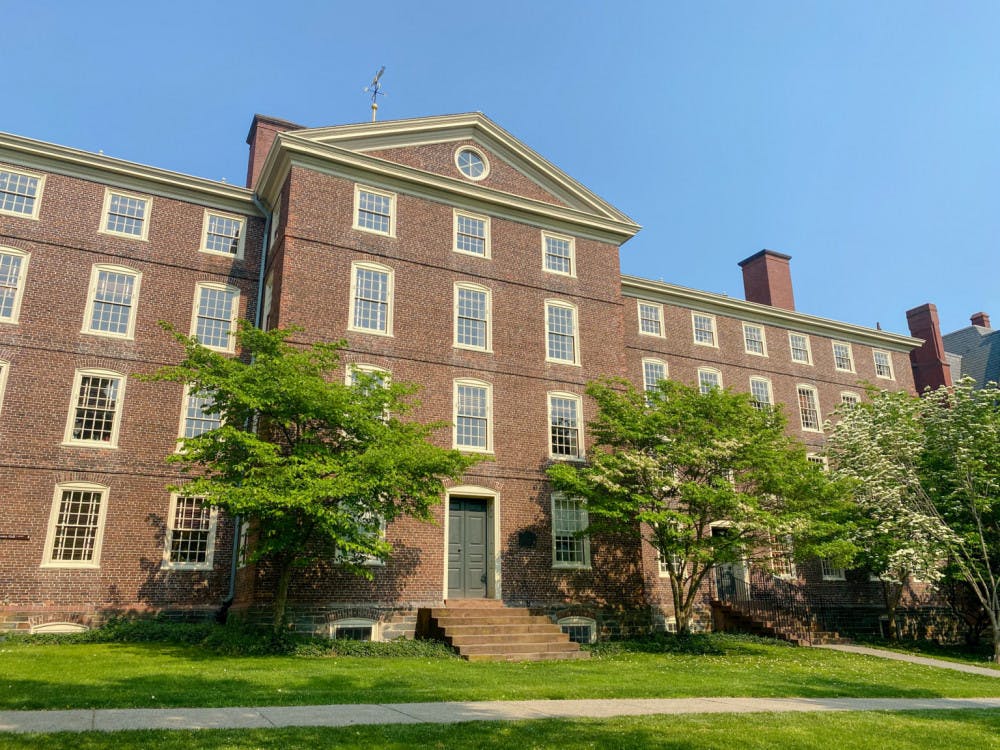The University will distribute $6.29 million in federal COVID-19 relief funds to students by the end of this month, according to a July 7 letter from Provost Richard Locke P’18 shared in Today@Brown. Eligible first-year students will receive funding after their arrival at Brown in September.
This federal funding is part of the American Rescue Plan, which was passed by Congress in March, and makes up the third round of funding of the Higher Education Emergency Relief Fund.
The University received official notification of the funding on June 10 and has since been “moving quickly to complete a comprehensive analysis of the financial need of its enrolled students for the fall so that distribution to eligible students can begin by the end of this month,” wrote University Spokesperson Brian Clark in an email to The Herald.
These preparations have included assessing the requirements the University will have to abide by when accepting the funding, which are distinct from previous rounds of funding, and identifying eligible student populations, Clark wrote. This process coincided with the University’s financial aid analyses, which allows for awards to be based on the “most up-to-date financial information provided by students.”
An additional $6.29 million was granted to the University to support institutional costs arising from the COVID-19 pandemic. This can be used for reimbursing expenses or lost revenue, technology costs to support remote education, payroll and faculty and staff training, according to the HEERF III FAQ. The institutional portion can also be used to provide additional emergency financial aid grants for students.
These funds will help pay for the University’s COVID-19 testing program, which has cost more than $30 million, Clark added. They will also help the University cover the $7.3 million spent in direct COVID-19 support to students through travel grants, E-gap funds, summer earnings waivers, increased financial aid and student payroll for those unable to work campus jobs remotely, the $10 million spent to provide on-campus students with single-occupancy rooms and personal protective equipment and the $9.5 million in financial aid used to support remote students with housing and meal costs.
“The institutional portion of relief funding will be essential to Brown’s budget given the University’s efforts to enhance support for students, financial and otherwise, while simultaneously contending with the financial impact of the COVID-19 pandemic, which both reduced revenues and required major new investments to protect the health and safety of the Brown community,” Clark wrote.
The University expects a total Fiscal Year 2021 deficit of $70 to $80 million, Clark added. “These federal funds help to offset the impact of that deficit and of the continued financial impact of the pandemic in the months ahead.”
The University plans to reconvene the group of students, faculty and staff that advised the University on how to disburse HEERF I and II funding in March, and it hopes to provide funding at levels “equal to or greater than” the first disbursement, Locke wrote. The University does “not expect significant changes” to the disbursement model from earlier in the year, but the University is consulting with students on “some questions related to specific populations of eligible recipients,” Clark wrote.
Administrators have also worked to outline steps for notifying students based on the same model from the first round of funding, Clark wrote.
The University distributed funding from the Coronavirus Aid, Relief and Economic Security Act and Coronavirus Response and Relief Supplemental Appropriations Act — HEERF I and II, respectively — in March following public pushback from students about the extended disbursement timeline and what they described as an opaque process.
This most recent round of funding differs from the previous round because it expanded student eligibility to include non-U.S. citizens and residents, Locke wrote. Eligible students include “U.S. citizens and permanent residents, undocumented and international students, asylum seekers, Deferred Action for Childhood Arrival (DACA) recipients and other DREAMers.”
Students eligible to receive funding will receive communication from Student Financial Services by the end of July.
“As we look forward to the next academic year, we will continue to work to support students with the resources they need to thrive,” Locke wrote. “If you have unmet needs, I strongly encourage you to seek out the significant resources available here at Brown designed to support academic progress, intellectual growth and overall health and wellness.”

ADVERTISEMENT




